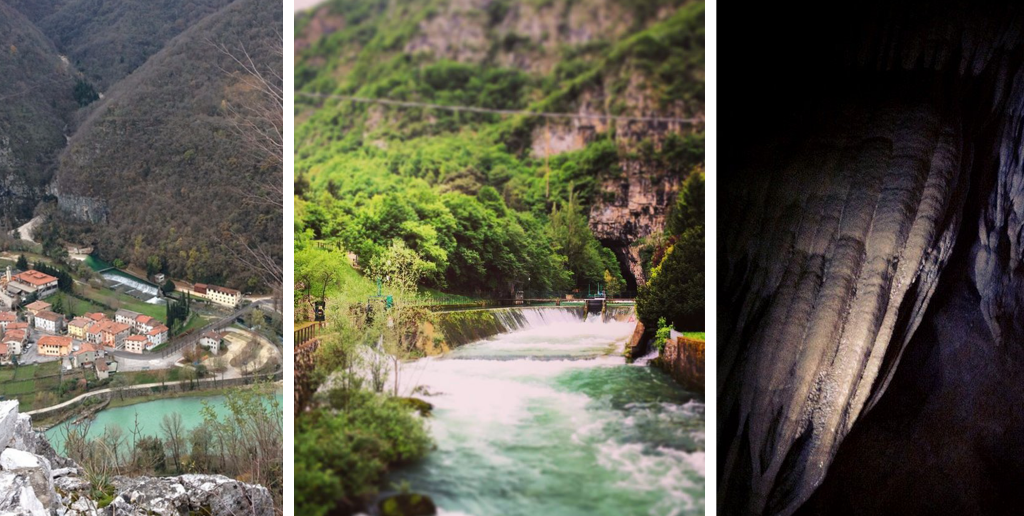Karst
The caves of Oliero are the most important discharges of the Sette Comuni (Seven Communes) karst massif. The caves discharge most of the water that feeds down through the numerous ponors and chasms of the Asiago plateau. The arrangement of layers and presence of fractures and faults have allowed a powerful collecting system to develop corresponding with the base water level and therefore the discharge to the outside. Water flows out of two caves with vauclusian springs opened in the main dolomite rock of the Upper Triassic, at 150 m above sea level. The tough layers of dolomite rock emerge at a 5° gradient and in a NNE direction.
The Brenta valley sides allow us to read the succession of geological layers that make up its mainly limestone rocky base consisting mostly of limestone. These are in fact ancient organic deposits – skeletons and shells – that built up on the bottom of a large sea from about 200 million years ago onwards and which were compressed over time, hardened and turned into rock. Then, as the continental plates collided, starting about 100 million years ago, these layers were raised to form mountains. Since then these geographical features have been subjected to settling and above all erosion by atmospheric agents. In this context you can also see the slow chemical and physical breakdown of limestone rock by rain which, combined with carbon dioxide in the atmosphere, becomes acidic enough to dissolve the limestone, make it spongy and cause it to fracture until actual underground chasms are created. In this way rainwater does not sit on the surface but is absorbed and penetrates deep underground to the hardest and most impermeable layers of rock, which force it to exit wherever it finds an outlet.
This is what happened on the Brenta valley bottom, which coincides with these layers, where numerous, powerful source springs wound their way through the rock carving out caves which stretch out for kilometres like the Parolini Cave, the Subiolo Cave and the numerous outflows.

